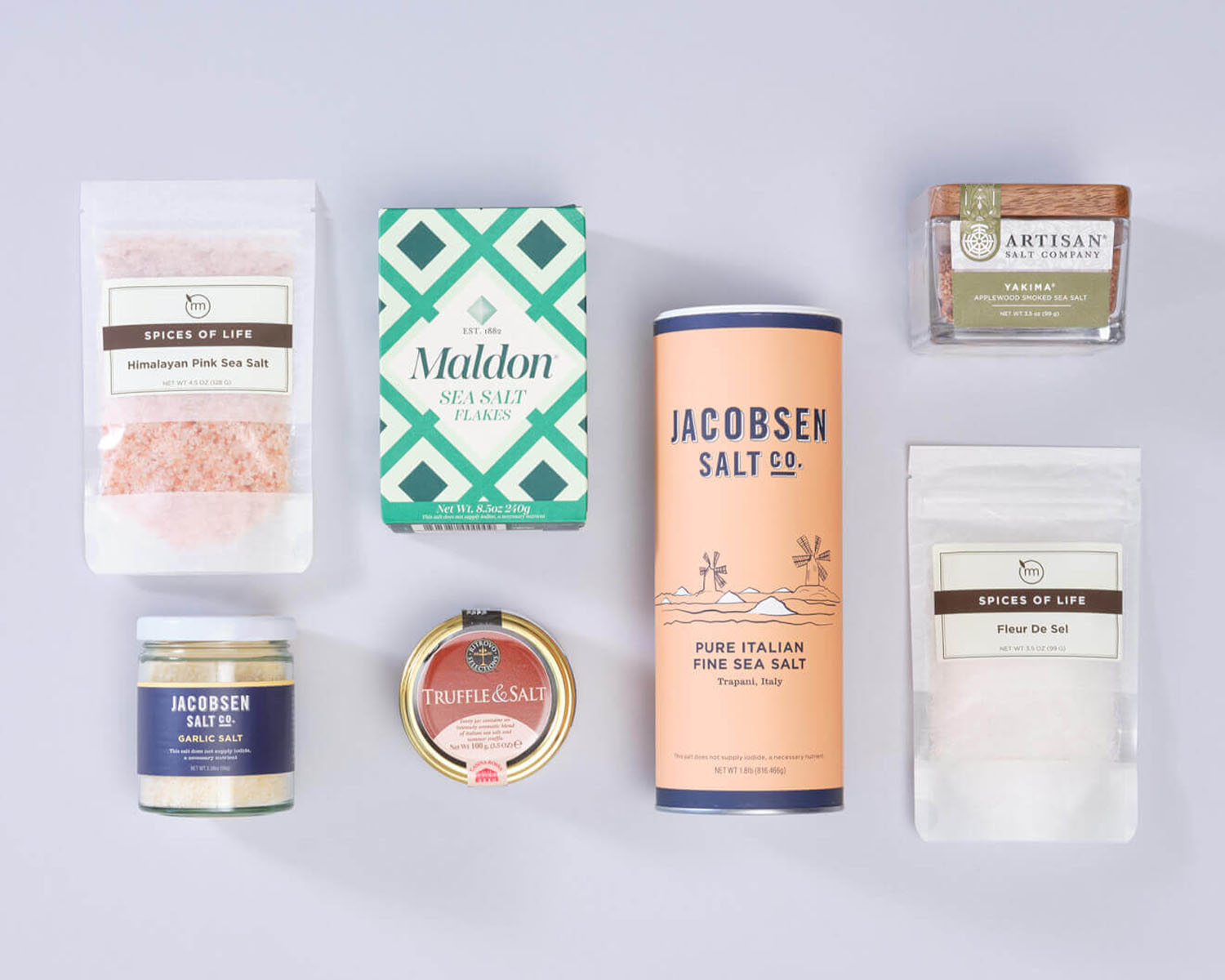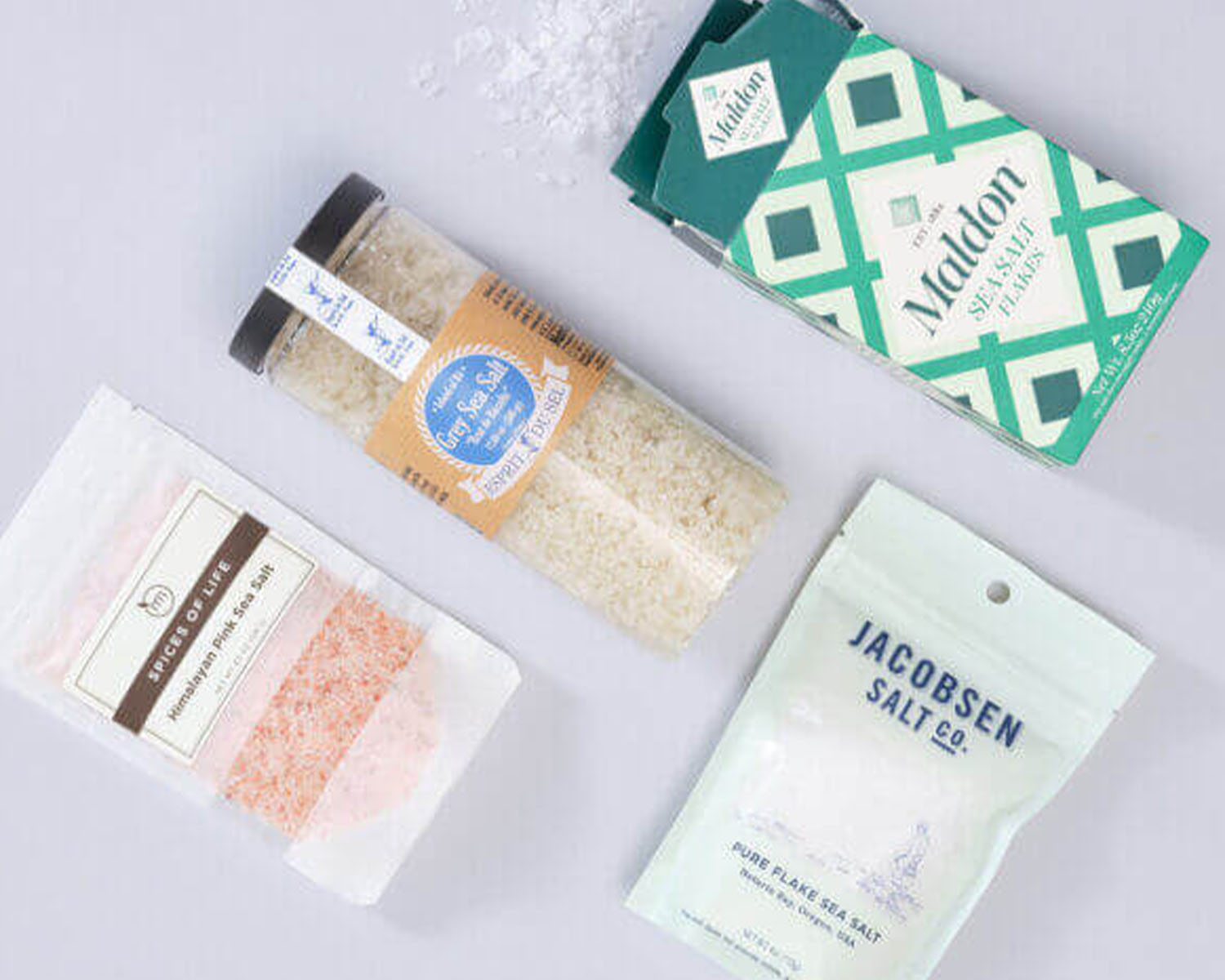
Good cooking doesn’t always mean an arm’s-length list of fancy ingredients. Often, the most memorable meals feature a few, simple, quality ingredients—properly seasoned with a hefty dose of good salt.
Fact: Salt makes a world of difference when it comes to cooking. It has the power to transform what's simply edible into something absolutely amazing. Salt should be added throughout the cooking process to impart flavor at every stage and to sufficiently infuse the various components of a dish.
Use salt liberally. Salt doesn’t always make food taste salty. Instead, it enhances the flavor of every ingredient it meets. For example, a pinch of flaky sea salt on slices of Cara Cara oranges, along with a drizzle of good olive oil, reduces the bitterness in the pith and increases the sweet and sour tastes inherent in the orange.
A great steak can become a star entrée simply by salting it correctly. Many chefs season their meat with salt hours in advance of cooking. Others follow the wisdom of Judy Rodgers, from the famous Zuni Café in San Francisco, California. She encouraged chefs to pre-salt meat days in advance. Providing sufficient time for salt to penetrate below the surface of meat allows the opportunity for moisture the salt extracts to be reabsorbed, resulting in a finished product that is far from dry or flavorless. This process also creates more amino acids and sugars which produces a golden savory crust around the meat's cooked exterior.
Salt seems like such a basic ingredient that most people rarely give it a second thought. For decades, home cooks grabbed the iodized salt that came in a blue cylindrical box. On the packaging was a little girl in a yellow dress under an umbrella. The product came from Morton’s Salt Company and featured their patented pour spout. They were the first to create free-flowing salt by adding an anti-caking agent. This prevented the salt from clumping when humidity or moisture struck, a real issue in the early 1900s.
Today, many cooks have moved away from iodized salt since iodine deficiency is no longer a major problem in the U.S. and because it imparts a slightly metallic flavor. Grocery stores now offer a large array of salts to enjoy for a variety of uses. There are so many choices that it can be a little overwhelming. Let's take a look at some of their various forms and functions.
Cooking Salt
For cooking and salting water, most chefs use kosher salt. There are two major brands: Diamond Crystal and Morton's—and they are NOT interchangeable!
Diamond Crystal kosher salt is actually crystalline. The light, hollow flakes crunch a bit between the fingers and help chefs to feel how much salt they’re adding. They also dissolve quickly and are less salty than Morton's.
Morton kosher salt has twice the salinity of Diamond Crystal. In addition to being saltier, the flakes are smaller and more dense than their counterparts. Therefore, it's easier to oversalt your food using Morton's because more grains occupy the same volume and because they take longer to dissolve and impact taste.
Which brand you choose comes down to personal preference. Just be mindful that many recipes don't clarify which type of salt to use, and it makes a big difference. (Metropolitan Market recipes are written for use with Diamond Crystal.) When in doubt, we suggest starting with half the amount called for when using Morton's.

Some recipes call explicitly for table salt. Table salt generally refers to smaller grains of salt with a high salinity. Morton kosher salt is a table salt.
For making baked goods, pastry chefs often use table salt, sometimes referred to as fine salt, since it disperses more easily and can be measured more accurately.
Finishing Salt
Many dishes benefit from a final touch — a sprinkle of flaky finishing salt that adds an extra boost of flavor and a delightful crunch.
Maldon salt, harvested in southern England, is the crown jewel of finishing salts. You can coronate just about anything with its sparkly, delicate, delicious flakes. Top a salad or sprinkle over sliced melon. Toss with blanched veggies or adorn a steak. Sprinkle on caramels, chocolate chip cookies, buttered bread—there is no shortage of options for this sensory treat!
Sel gris, or grey sea salt, gets its gray color from salt ponds in France, where it’s harvested. It has a more mineral-forward and briny flavor than other flaky salts and makes the perfect flourish to finished fish dishes.
Fleur de sel translates to "flower of salt" and likely derives its name from its flower-like crystals that are skimmed by hand from the surface of salt marshes in Brittany. It is the saltiest of finishing salts and has a briny flavor and high moisture content. This is a great salt for sprinkling atop vegetables, eggs, and treats like homemade pretzels.
Pink Himalayan salt, harvested from the Himalayan mountains in Pakistan, is rich in minerals and tastes slightly sweet in comparison to other salts. Finely grind it and to popcorn for an addicting snack. Otherwise, enjoy it anywhere else you would use finishing salt, especially where a dose of pretty color would be welcome.
Infused Salt
Not only can salt taste salty, briny, or minerally— but salts come in a whole host of other flavors.
Salt infused with smoke imparts a sense that food was cooked over an open campfire. It lends umami depth to vegetarian dishes. Truffle salt elevates popcorn from humble to gourmet. Citrus-fennel salt, merlot salt, habanero salt, curry salt—they all add unexpected, amped-up flavor to a weeknight meal.
Start experimenting! Explore the ones that intrigue you most and diversify your spice cabinet. Metropolitan Market offers a variety of salts in small packets, so you can try new ones without significant investment. Specialty salts also make great gifts. Share the fun of taste-testing with friends and discovering new ways to enjoy seasoning your food.



